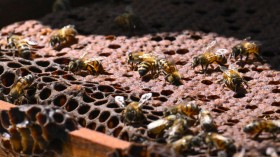The planet has been losing a vast number of animals in the last few decades. To be more specific, 58 percent of the global vertebrates population has perished between 1970 and 2012, according to the recently released Living Planet Report 2016.
The report was produced by the World Wildlife Fund (WWF) and tracked more than 14,000 vertebrate populations of more than 3,700 species, finding that creatures who live in lakes, rivers and other freshwater habitats have experienced the biggest drop in numbers losing 81 percent of their populations.
Furthermore, the Living Planet Report predicts that if the trend continues, the world could lose two-thirds of its animal population by 2020.
"This research delivers a wake-up call that for decades we've treated our planet as if it's disposable," WWF president and CEO Carter Roberts said in a press release from WWF. "We created this problem. The good news is that we can fix it. It requires updating our approach to food, energy, transportation, and how we live our lives. We share the same planet. We rely on it for our survival. So we are all responsible for its protection."
The report revealed that habitat loss and degradation, which is driven by an increasing demand for food and energy. The top cause of destruction of habitats and overexploitation of wildlife have been shown to be global food production.
After all, agriculture takes up about one-third of the planet's land area, pushing animals out of their habitats. Food production also accounts for 70 percent of the world's freshwater use, which is important to note especially in the dramatic decline of freshwater animals.
Living Planet Report 2016 is the 11th edition of the WWF publication. It also includes research from the Global Footprint Network and the Zoological Society of London.
© 2024 NatureWorldNews.com All rights reserved. Do not reproduce without permission.





